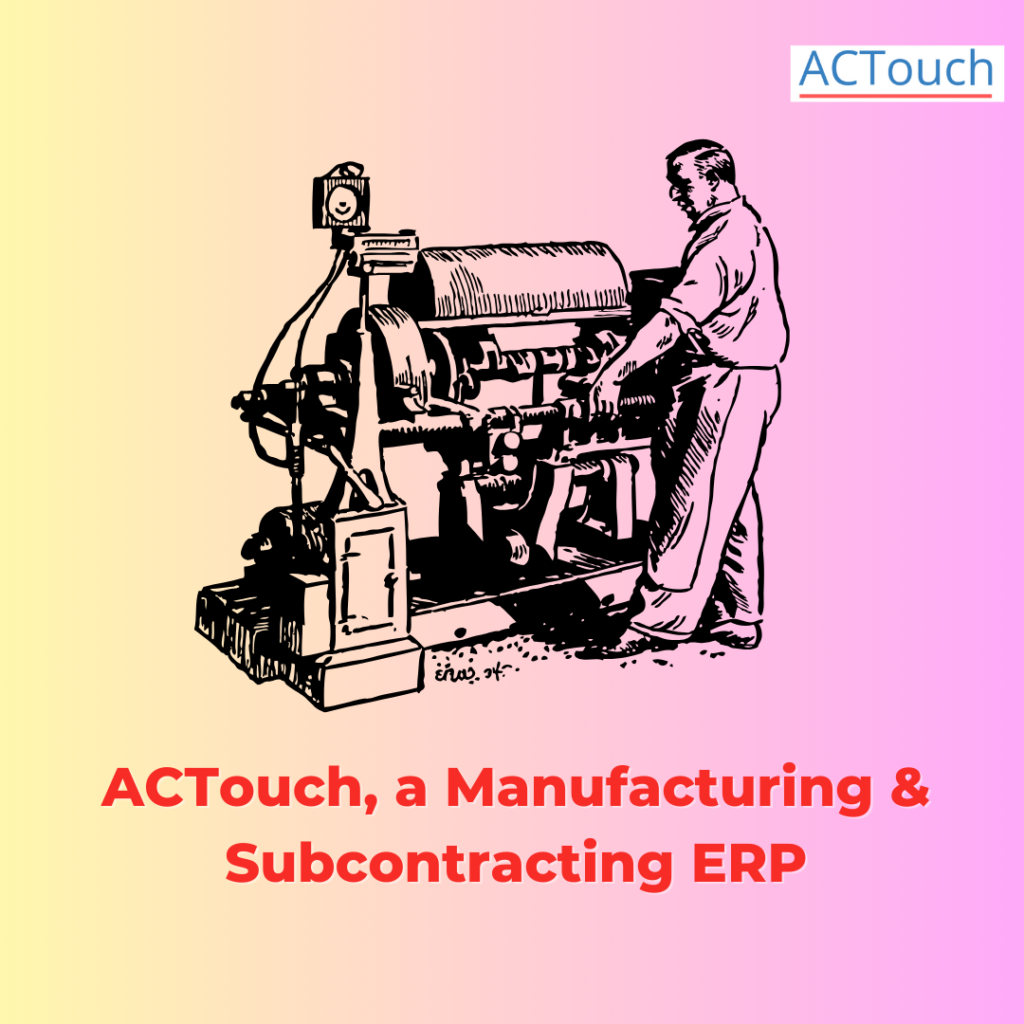Job Costing in Manufacturing: Enhancing Cost Efficiency and Profitability
What is Job Costing / Job Order Costing?
Job costing / Job Order Costing is a cost accounting method used by manufacturing businesses to track and allocate costs to specific jobs or projects. It involves assigning direct and indirect costs to individual jobs to determine the total cost incurred for each job. This enables businesses to accurately calculate the profitability of each job and make informed pricing decisions. Job costing is particularly useful in industries where custom orders or unique projects are common.
For example, let’s consider a furniture manufacturer that receives a custom order for a set of dining tables and chairs. The company would identify all the direct costs and overhead cost associated with the job, such as the cost of raw materials, labor hours spent on manufacturing, and any specific tools or equipment required to convert to a finished product including indirect materials. Additionally, indirect costs, such as factory rent, utilities, and administrative expenses, would also be allocated to the job. By aggregating these costs, the company can determine the total cost incurred for the specific job and use this information to set a competitive price that ensures profitability.
So the total cost of the product is the combination of actual costs, overhead cost, Direct Materials, manufacturing costs, indirect material costs labor cost etc.
Total project costs are measured based on multiple factors including Cost of materials, Direct labor, indirect labor, Machine costs, production process costs, Purchase, Sales, Material consumption etc. This is calculated for an accounting period
Why Job Costing is important for Business?
Job costing plays a crucial role in the success and profitability of manufacturing businesses. Here are some key reasons why job costing is important:
Accurate Pricing
Job costing provides a precise understanding of the costs associated with each job or project. This allows businesses to calculate the true cost of production and accurately price their products or services. By considering both direct and indirect costs, businesses can avoid underpricing that may lead to losses or overpricing that may deter potential customers.
Cost Control
Job costing enables businesses to identify areas of excessive costs and take necessary measures to control them. By tracking costs at a granular level, businesses can pinpoint inefficiencies, optimize resource allocation, and implement cost-saving strategies. This helps improve overall cost efficiency and maximize profitability.
Profitability Analysis
Job costing provides valuable insights into the profitability of individual jobs or projects. By comparing the total cost incurred with the revenue generated from each job, businesses can identify their most profitable areas and focus on those. This analysis helps in identifying high-value customers, profitable product lines, and areas for improvement.
Resource Allocation
Job costing facilitates effective resource allocation. By understanding the costs associated with different jobs, businesses can allocate resources, such as labor, materials, and equipment, more efficiently. This ensures that resources are utilized optimally, reducing waste and improving overall productivity.
Decision Making
Job costing provides businesses with accurate and reliable data to support decision-making. Whether it’s evaluating the feasibility of new projects, assessing the profitability of existing ones, or making strategic investments, job costing data helps businesses make informed decisions based on real cost figures.
7 steps to follow Job Order Costing.
Implementing a job costing system involves several steps to ensure accurate cost allocation and effective tracking. Here’s an example of a step-by-step approach to follow:
Step 1: Identify Cost Categories: Begin by identifying the various cost categories that need to be tracked for each job. These categories may include direct material costs, direct labor costs, indirect costs (overheads), and any other specific cost elements relevant to your manufacturing process.
Step 2: Allocate Direct Costs: Determine the direct costs associated with each job. Direct costs are those directly attributable to a specific job and can be easily identified. For example, in the case of manufacturing custom furniture, direct costs may include the cost of raw materials, any specialized tools or equipment required for the job, and direct labor costs for the employees working on the project.
Step 3: Allocate Indirect Costs: Assign indirect costs to each job. Indirect costs are expenses that are not directly tied to a specific job but are necessary for the overall manufacturing process. These costs mayinclude factory rent, utilities, maintenance, administrative expenses, and depreciation. Allocate these costs based on a suitable allocation method, such as labor hours, machine hours, or square footage.
Step 4: Record and Track Costs: Establish a system to record and track costs for each job. This can be done through job cost sheets or project codes in your accounting or enterprise resource planning (ERP) system. Regularly update the cost records as expenses are incurred throughout the project’s lifecycle.
Step 5: Calculate Total Job Cost: Aggregate the direct and indirect costs allocated to each job to calculate the total cost incurred. This provides a comprehensive view of the financial investment made in each job.
Step 6: Compare with Revenue: Compare the total job cost with the revenue generated from the job to assess its profitability. This analysis helps identify the jobs that are contributing the most to the bottom line and those that may require adjustments in pricing or cost control measures.
Step 7: Continuous Improvement: Regularly review and analyze the job costing data to identify areas for improvement. Look for patterns, cost variances, and opportunities to enhance cost efficiency and profitability. Use these insights to refine your pricing strategies, resource allocation, and operational processes.
By following these steps, businesses can implement an effective job costing system that allows for accurate cost tracking, informed decision-making, and improved profitability.
|
What are the Job Costing methods?
Job costing methods refer to different approaches used to allocate costs to specific jobs or projects. Here are three commonly used job costing methods:
Specific Order Costing
This method is suitable for businesses that undertake custom orders or projects with unique requirements. Specific order costing involves allocating direct costs and overheads directly to each job. The costs incurred are specific to the particular job, allowing for precise cost tracking and accurate pricing.
Job Batch Costing
Job batch costing is employed when similar products or services are produced in batches or groups. Costs are accumulated for each batch, which may consist of multiple units or jobs. The costs incurred for the batch are divided by the number of units or jobs to determine the average cost per unit or job.
Contract Costing
Contract costing is commonly used in industries where long-term contracts are prevalent, such as construction or infrastructure projects. Costs are accumulated for each contract, considering both direct costs and a portion of indirect costs. Contract costing focuses on monitoring the costs associated with a specific contract and assessing its profitability.
The choice of job costing method depends on the nature of the business, the type of projects or products involved, and the level of cost detail required. Implementing the most suitable job costing method ensures accurate cost allocation and facilitates effective cost management.
How to calculate Job Order Costing?
Calculating job Order Costing involves aggregating all the direct and indirect costs associated with a specific job or project. Here’s a general approach to calculating job costing:
Step 1: Identify Direct Costs: Determine the direct costs incurred for the job. These costs are directly attributable to the specific job and include items such as direct materials, direct labor, and any other direct expenses associated with the job.
Step 2: Allocate Indirect Costs: Assign the appropriate portion of indirect costs to the job. These costs are not directly tied to a specific job but are necessary for the overall manufacturing process. Allocate indirect costs based on a suitable allocation method, such as labor hours, machine hours, or square footage.
Step 3: Summarize Costs: Summarize the direct costs and allocated indirect costs to calculate the total cost incurred for the job.
Total Job Cost = Direct Costs + Allocated Indirect Costs
Step 4: Compare with Revenue: Compare the total job cost with the revenue generated from the job to assess its profitability. If the total cost is lower than the revenue, the job isconsidered profitable. If the total cost exceeds the revenue, adjustments may be required to improve profitability, such as cost control measures or pricing adjustments.
Calculating job costing accurately is crucial for businesses to ensure that costs are properly allocated, pricing is appropriate, and profitability is maximized. Utilizing a robust accounting or ERP system can streamline the calculation process and provide accurate and real-time job costing information.
What are the differences between Process costing and Job costing?
Process costing and job costing are two distinct costing methods used in manufacturing businesses. Here are the key differences between the two:
Process Costing:
- Suitable for industries that produce homogeneous products on a large scale.
- Costs are averaged over the production process, not assigned to individual jobs or units.
- Costs are allocated to production departments or processes.
- Standardized cost per unit is calculated by dividing total production costs by the number of units produced.
- Examples of industries that use process costing include chemical manufacturing, oil refining, and food processing.
Job Costing:
- Suitable for industries that produce customized or unique products or services.
- Costs are assigned to individual jobs or projects.
- Costs are tracked for each job separately, allowing for accurate pricing and profitability analysis.
- Direct costs and indirect costs are allocated to specific jobs.
- Examples of industries that use job costing include custom manufacturing, construction, and consulting services.
In summary, process costing focuses on large-scale production of homogeneous products, where costs are averaged over the production process. Job costing, on the other hand, is used for custom or unique projects, where costs are tracked and allocated to individual jobs. The choice between process costing and job costing depends on the nature of the industry, the type of products or services, and the level of cost detail required for accurate cost management.


